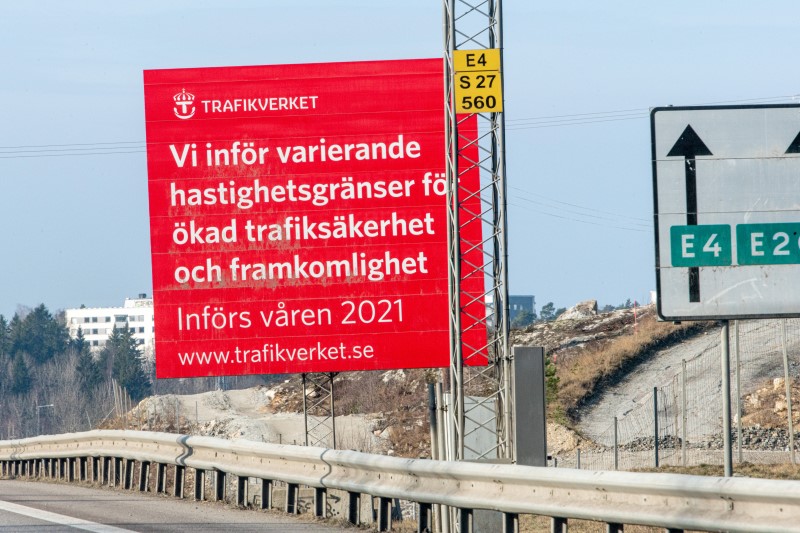The impact of varying speed limits on traffic conditions – A case study on the E4 around Södertälje

Variable speed limits, if applied correctly, can improve the traffic conditions at locations that are experiencing frequent problems with congestion, inefficient traffic flows and queue propagation. During 2020-2022, a field trial has taken place around Södertälje to investigate how the traffic situation is affected by the use of variable speed limits that focus on improving the traffic efficiency.
At the on- and off-ramp locations around Södertälje, the speed limit is reduced from 100 to 80 km/h at dense traffic conditions. To increase compliance, the variable speed limits are shown with a red ring, i.e. mandatory speed limit.
Results from the field trial was presented to Trafikverket on January 16 by Ellen Grumert (VTI) and David Gundlegård (LiU). At the presentation a methodology was proposed for how evaluations of this type of system can be done in a systematic and efficient way. Special focus was given to the selection of comparable days before and after variable speed limits was introduced. The choice of days is based on clustering methods that has previously been developed in CTR projects by LiU and KTH. The evaluation method include methods to evaluate traffic safety, traffic efficiency and environmental impacts.
From the field study it is concluded that the compliance rate was surprisingly high when introducing mandatory variable speed limits at dense traffic conditions. Traffic safety is positively affected with lower average speeds at dense traffic conditions and more homogeneous speeds between individual drivers as well as between lanes. The travel time is on average somewhat longer when variable speed limits are applied. However, the number of drivers that experience long travel times and long queues are fewer with variable speed limits. Furthermore, environmental impacts are positively affected with lower emission levels with variable speed limits at dense traffic conditions compared to without.



